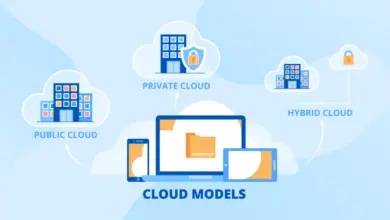The Economics of Cloud Storage: Cost Management and Optimization
The Economic Advantages of Cloud Storage: Mastering Cost Control and Optimization

Economics of Cloud Storage: In the fast-paced digital era we live in today, businesses of all sizes are increasingly relying on cloud storage to manage and store their data. This shift is driven by the numerous benefits of cloud storage, including flexibility, scalability, and cost-efficiency. However, while cloud storage offers a wealth of advantages, it’s vital for businesses to understand the economics of cloud storage to ensure they’re making the most cost-effective decisions. In this comprehensive guide, we’ll delve into the intricacies of cloud storage, exploring how to optimize costs and ensure efficient data management.

Understanding Cloud Storage
What Is Cloud Storage?
Cloud storage refers to the practice of storing data in an online repository that can be accessed from anywhere with an internet connection. Instead of relying on on-premises servers and hardware, businesses can leverage the resources of cloud service providers to store and manage their data.
The Growth of Cloud Storage
The adoption of cloud storage has been on a meteoric rise over the past decade. This growth is driven by several factors, including the need for remote work solutions, the increasing volume of data generated, and the cost-effectiveness of cloud storage. According to a report by Gartner, the cloud services market is expected to reach $396 billion by the end of 2023, reflecting a 21.7% increase from the previous year.
Cost Management in Cloud Storage
Factors Affecting Costs
Managing costs in cloud storage involves a multi-faceted approach. Several factors can impact the cost of cloud storage, including:
Data Volume
The volume of data you store in the cloud directly influences your costs. Cloud service providers typically charge based on the amount of data stored, so it’s essential to optimize your data storage practices to minimize costs.
Data Transfer
Transferring data in and out of the cloud can also incur expenses. It’s crucial to understand how data transfer costs work and take steps to reduce unnecessary data movement.
Service Tiers
Most cloud providers offer different service tiers with varying levels of performance and cost. Selecting the right tier for your specific needs is a critical cost management strategy.
Cost Optimization Strategies
To ensure cost-efficiency in cloud storage, consider implementing the following strategies:
Data Lifecycle Management
Implement data lifecycle policies to automatically archive, delete, or move data as it becomes less relevant. This reduces data storage costs and streamlines data management.
Resource Scaling
Leverage auto-scaling features to adjust your resource allocation based on workload demands. This ensures you’re not overprovisioning resources, which can lead to unnecessary costs.
Reserved Instances
Many cloud providers offer discounts for committing to long-term usage of their services. Consider utilizing reserved instances to lock in lower prices.
The Importance of Security and Compliance
While cost optimization is crucial, it should never come at the expense of security and compliance. Protecting your data and adhering to industry regulations is paramount. Ensure that your cloud storage solution offers robust security features, including encryption, access controls, and audit trails. Regularly audit your cloud environment to identify and address potential vulnerabilities.
Choosing the Right Cloud Storage Provider
Selecting the right cloud storage provider is a critical decision that impacts both your costs and overall data management. When evaluating potential providers, consider the following:
Service Level Agreements (SLAs)
Review the SLAs offered by providers to understand their commitments regarding uptime, data durability, and customer support.
Data Center Locations
Choose a provider with data centers strategically located to meet your specific needs, whether that’s global coverage or compliance with regional data residency requirements.
Integration Capabilities
Ensure that the cloud storage solution can seamlessly integrate with your existing systems and applications.
Cost Transparency
Select a provider that offers transparent pricing structures and tools for tracking and managing costs.
Conclusion
Cloud storage is an integral part of modern business operations, offering unparalleled flexibility and scalability. To make the most of this technology while optimizing costs, it’s essential to understand the economics of cloud storage. By carefully managing costs, implementing optimization strategies, and prioritizing security and compliance, businesses can leverage cloud storage as a strategic asset in their data management arsenal.



